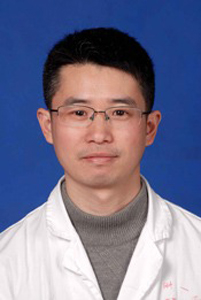Program Information
A Modified Adaptive Radiotherapy Based On CT-CT Image Fusion with a Repeat CT in the VMAT Treatment of Nasopharyngeal Cancer Patients
X Jin*, C Xie, C Han, the 1st Affiliated Hospital of Wenzhou Medical College, Wenzhou, Zhejiang
SU-E-T-605 Sunday 3:00PM - 6:00PM Room: Exhibit HallPurpose:
To investigate the volumetric and dosimetric changes of a CT-CT image fusion based adaptive radiotherapy by using a repeat CT as contour references.
Methods:
Nine nasopharyngeal cancer (NPC) patients underwent a modified adaptive volumetric modulated arc radiotherapy (VMAT) based on CT-CT image fusion were enrolled in this study. The volumetric and dosimetric changes of gross tumor volume (GTV) and organs at risk (OARs) were investigated with a repeat CT at 23rd fraction. A commercially deformable registration software package, MIMVista, was applied to verify the contour and dosimetric changes accuracy of the CT-CT image fusion based modified adaptive radiotherapy.
Results:
The average volume of GTV decreased from78.83±38.42 cm3 in the initial planning CT to 71.44±37.46 cm3 in the repeat CT, but with no significant difference (p=0.66). The average volume of the left parotid and right parotid decreased from 19.91±4.89 cm3 and 21.58±6.16 cm3 in initial planning CT to 11.80±2.79 cm3 and 13.29±4.17 cm3 in the repeat CT (both p<0.01), respectively. The volume of other OARs did not shrink very much. Dice similarity coefficient (DSC) and mass center distance (MCD) verified the accuracy of CT-CT image fusion. No significant difference on GTV and CTV coverage was observed. Significant differences in volume of left parotid (p=0.03) and right parotid (p<0.01) receiving 5 Gy were observed between the initial plan and the re-optimized plan. The mean dose of left parotid (p=0.08) and right parotid (p<0.01) were also significantly different. There was no significant difference on the dose delivered to other OARs.
Conclusion:
Patients with NPC undergoing VMAT have significant anatomic and dosimetric changes to parotids. Repeat CT as an anatomic changes reference and re-optimization with initial CT based on CT-CT image fusion was accurate enough to identify the volume changes and to ensure safe dose to parotids.
Contact Email:


